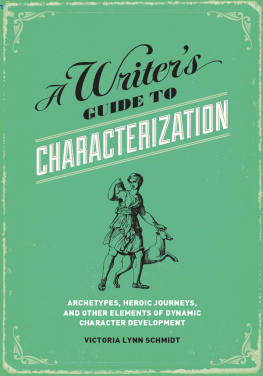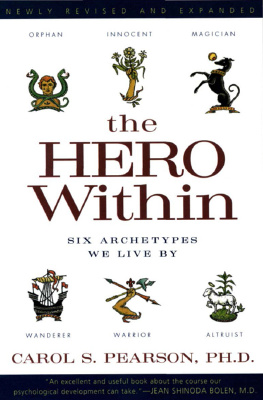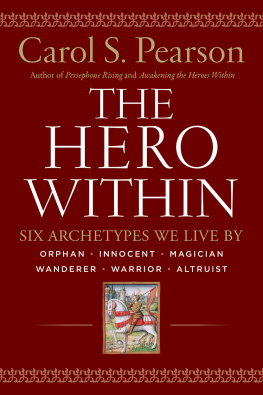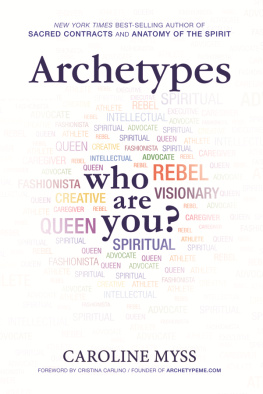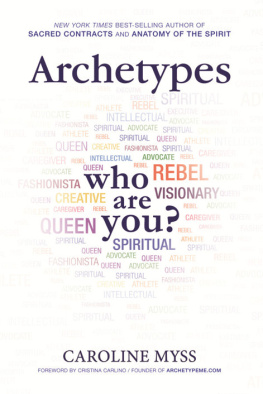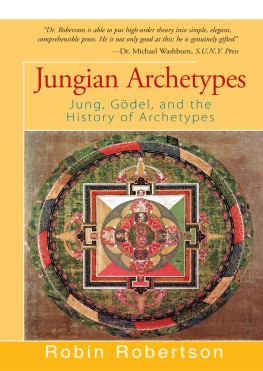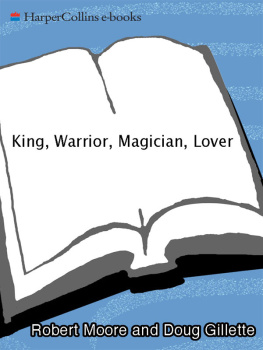Warrior, Magician, Lover, King
A Guide To The Male Archetypes Updated For The 21 st Century
Rod Boothroyd
Warrior, Magician, Lover, King: A Guide To The Male Archetypes Updated For The 21 st Century
First Edition Published 2018 by Sovereign Books Ltd
No part of this book may be reproduced by any mechanical, photographic or electronic process, nor in the form of a photographic recording. It may not be copied or transmitted electronically or otherwise either for private or public use, other than for the purposes of fair use as brief quotations or critical analysis incorporated in articles and reviews, without prior written permission of the publisher.
The moral rights of the author have been asserted in accordance with the Copyright, Designs and Patents Act, 1988.
Copyright 2018 Rod Boothroyd & Sovereign Books Ltd
sales@sovereignbookpublishing.com
All rights reserved. No reproduction without permission except for the use of short extracts in illustration or analysis.
ISBN-13: 978-1722820893
ISBN-10: 1722820896
Dedication
This book is dedicated to all the men Ive met over the years who are doing personal work to heal their emotional wounds, recover their true selves, and grow as men so they can more fully embody the mature masculine.
Contents
Chapter 1 The Archetypes Within Us
Chapter 2 The Warrior Archetype
Chapter 3 The Magician Archetype
Chapter 4 The Lover Archetype
Chapter 5 The Sovereign Archetype
Chapter 6 Your Shadow Uncovered: Exploring Your Unknown Inner World
Chapter 7 Emotional Process Work: Becoming Who You Were Always Meant To Be
Chapter 8 Resources: Places To Work On Your Shadow
Acknowledgements
Im deeply indebted to the late Robert Moore and Douglas Gillette for their pioneering work on the male archetypes. Their books provided men with a guide to the male psyche which has done much to illuminate the way men think and feel in society today.
Beyond them, of course, lies the profound influence of Carl Jung, father of archetypal theory, and more recently Robert Bly and other significant contributors to the modern mens movement.
Most of all my gratitude goes to my clients, both in group work and one to one work, who have taught me the true meaning of humanity and compassion.
In the production of this book, I have been guided and helped, directly and indirectly, by my discussions and work with my colleagues Diarmaid Fitzpatrick, Ed Rooke, and Marianne Hill.
My curiosity and passion to learn and understand more about the psyche is fostered by support from the men who join me each week in our various mens groups.
And finally, I thank my original teachers and therapists, Bob Cooke and Richard Erskine, for the gifts which they have so generously given me, in many different forms.
Chapter 1
The Archetypes Within Us
We look like separate individuals, each of us walking around in our own body. Despite this appearance of separation we have more in common than we realize, including some primal blueprints or archetypes laid down deep in our unconscious minds. These archetypes are templates or patterns which shape the way we think, feel and behave. And because theyre derived from shared concepts, images and representations of the world and the people in it, theyre something we all instinctively recognize as a fundamental part of our humanity.
Take an example: if I say the word Warrior, you instantly know what I mean. And the same is true if I speak of a Magician or a King or a Father or Mother. These are all human archetypes, each of which can take many different forms.
Being human, we share the same genetic inheritance. And so we also share the same feelings, emotions, and ways of thinking. Sure, we differ in physical appearance, but essentially our genetic inheritance is one and the same its human. No wonder we all instinctively understand the idea of human archetypes. Whether these archetypes are male and female, young or old, we intuitively know what they are, how they operate, and what role they play in our lives.
Carl Jung was probably the first Western psychologist to recognize that archetypes are something we all have in common; he believed the energy of archetypes resided in what he called the collective unconscious. Nowadays most people see archetypes as being stored in the unconscious mind rather like permanent programs etched into the memory of a computer chip. The unconscious seems to have unlimited storage capacity, holding not just our archetypal programming but perhaps also a memory of every event thats ever happened to us. It also holds all the basic biological programs we need to stay alive including those which control digestion, respiration, circulation of the blood, and the chemical balance in our tissues, among many others.
So what do archetypes actually do for us? Perhaps its most useful to think of them as genetically determined potentials or possibilities for different aspects of our personality. The exact way in which a particular archetype will be expressed in each of us will be influenced by our individual experience of life and the culture in which we live.
Over the years, different psychologists have come up with different names for human archetypes. Some of them we would all recognize: to take another example, we all intuitively know what is meant when we hear of the female archetype of the Mother. If you pause for a moment to consider what the word Mother means to you, youll most likely have conjured up your version of the Mother archetype in your mind.
Equally, you probably also have a sense of what the Wise Elder archetype might mean in a man or a woman. And you will certainly know how a King or Queen archetype might look.
The important point about these archetypes is that theyre common to all humanity. Theyre like an internal foundation upon which every man and every woman builds their own particular experience of life. To make the point again, the way in which each archetype finds its expression in an individual man or woman will be shaped by what they learn for themselves, what they learned about life from their parents, and influences from their cultural background.
Although there are many different archetypes which describe aspects of human experience, there are four fundamental archetypes which embody the most important parts of our personalities with extraordinary precision.
These four archetypes are the Sovereign (the King or Queen), the Warrior, the Magician, and the Lover. Many writers have adapted those names and come up with words they believe are more representative of the energy in each archetype. For example:
Sovereign = Leader, Chieftain, Chairman, Director, Elder
Warrior = Action Taker, Worker
Magician = Thinker, Wise Man or Wise Woman, Sage
Lover = Sensor, Feeler, Connector
However for me the original names really sum up the main areas of our personality. They exist within each one of us almost like different individuals. Certainly they are separate and distinct areas of your personality and each of them carries a particular energy.
And this is where the concept of archetypes becomes very useful in working with the behaviours that you want to change. In my work with men and women, the most common questions Im asked, one way or another, are Why am I behaving this way? Why do I feel like this? and What can I do to change the way I think, feel, and behave?
The answer is start by looking at how you express each of these archetypes. When you do this it becomes easy to see why youre behaving in a certain way and, more importantly, its much easier to change unhelpful or unwanted behaviours into something that really supports you in your life and in the world.
Heres a brief introduction to each of them. Later well look at them in more detail.
Next page

